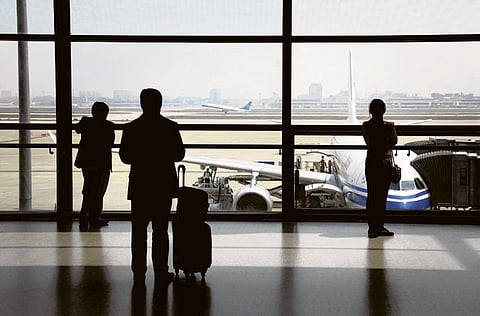Airlines will not keel over because of coronavirus
Asian and Chinese carriers will come up with some ways to contain coronavirus damages

Sydney (Bloomberg): Airlines are perpetually on the alert against crashes. That doesn’t mean the coronavirus epidemic will lead to any corporate disasters.
The outbreak that originated in the Chinese city of Wuhan could push some airlines in Asia to the wall, according to Alan Joyce, CEO of Australia’s biggest carrier Qantas Airways Ltd.
“A lot of airlines may not be able to keep some of these operations going. It’s survival of the fittest.”
Such an outcome would provoke some schadenfreude at Qantas, the best-performing full-service carrier in a Bloomberg index of Asia-Pacific airlines over the past year.
At the same time, it’s hard to point to any major company that’s plausibly close to the edge.
While the aviation industry is perpetually teetering on the edge of profitability, one of the main reasons is that so many carriers are controlled by indulgent shareholders who will go to extraordinary lengths to see their businesses through rough patches.
Learn from SARS
The impact of the epidemic is likely to be sharp. In 2003, SARS caused Asia-Pacific carriers to lose $6 billion in revenue and 8 per cent of their traffic, according to the International Air Transport Association.
At the same time, it will probably be short, too. Coronaviruses are winter diseases that should be well and truly in retreat by late spring. Should control measures now being implemented prove effective, recovery could be under way even sooner.
If SARS is any guide, that will trigger a surge of pent-up demand from leisure and business travellers. Then there’s the fact that people around the world don’t just decide to stop travelling because there’s a virus outbreak in China. Indeed, the more likely response in many countries will be to encourage tourists to stay closer to home.
That may benefit airlines’ domestic aviation businesses, which tend to be more profitable than longer-haul international arms.
Mostly a domestic/regional issue
China’s market has remained frustratingly closed.
Right now, that may be a blessing.
About two-thirds of the passenger traffic beginning or ending at Chinese airports is operated by mainland carriers or Hong Kong-based Cathay Pacific Airways Ltd.
The remaining traffic with a Chinese leg represents only about 5.7 per cent of the global market, so only the most China-exposed operators are likely to see a material shock.
Some airlines are clearly more vulnerable than others.
Thailand, a major destination for Chinese tourists, is home to four struggling carriers where fierce competition has driven passenger revenue below operating costs, causing the listed industry to lose about three-quarters of its market capitalisation in the past three-and-a-half years.
Still, while all four are failing to pay their interest expenses out of income and only Thai Airways International Pcl can boast positive free cash flow, other factors may support them.
Bangkok Airways Pcl was founded and is controlled by Prasert Prasarttong-Osoth, who may do quite well over the next few months since his fortune is based on operating private hospitals.
Nok Airlines Pcl has a similar relationship with the Jurangkool auto-parts dynasty, and had already been acquiring fresh loans and capital infusions to keep its planes in the air.
Thai Airways, which quashed speculation of imminent bankruptcy last year, is majority-owned by the government, while Asia Aviation Pcl is the local arm of the AirAsia Bhd empire, so should be able to count on similar support from head office.
Shareholder backing
There’s no shortage of forgiving shareholders among cash-strapped airlines elsewhere in the region.
PT Garuda Indonesia is, like Thai Airways, controlled by the government; PAL Holdings Inc. by Philippines billionaire Lucio Tan.
Asiana Airlines Inc. and Virgin Australia Holdings Ltd. have been struggling for years, but the former was bailed out by a consortium of local investors in December while the latter has a long history of being supported by offshore airlines interested in keeping Qantas on the back foot in its home market.
It’s a similar picture in China itself, which will take the brunt of the impact.
Only Air China Ltd. has been consistently racking up positive free cash flow of late, but every major listed carrier has ample interest coverage so shouldn’t be fearing imminent talks with creditors.
Those that are state-owned enterprises will be able to count on the state standing behind them; Hainan Airlines Holding Co., which isn’t exactly, is already being looked after as part of the multi-year workout of the buying spree that its controlling shareholder HNA Group Co. went on in the middle part of the last decade.
Cathay, for its part, has endured an annus horribilis but has for generations been a favourite child of its largest shareholder Swire Pacific Ltd.
Like Virgin Australia, it has enough deep-pocketed owners to see it through a rough patch.
That doesn’t mean that the region’s airlines won’t struggle over the months ahead.
Still, the dream scenario for Qantas — where competitors go under and take some capacity out of Asia’s fiercely competitive market — may remain just that: a dream.
Sign up for the Daily Briefing
Get the latest news and updates straight to your inbox



